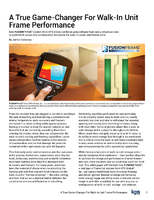Silicone Transforms Global Architecture
Dow Corning Working To Provide Enhanced Structural Safety and Design
Midland, Michigan (June 7, 2007) ¯ As reflections of sun and clouds glide across uninterrupted facades of mirrored glass, metal, and stone, building occupants take comfort in knowing they are safer from natural and man-made disasters, and architects beautify city skylines with innovative designs.
In just a generation, the construction industry has been revolutionized by structural silicone glazing, which can replace mechanical fasteners as a way to adhere glass, ceramic, metal, stone, and other materials to building frames.
"Architectural imaginations soared once the limitations of mechanical fasteners were lifted," said Ron Fillmore, global industry executive director for Dow Corning's construction industry. "Today's buildings are taller, sleeker, and more resilient to harsh environments than ever before."
Exhibiting strength, stability, and versatility, the natural chemical properties of silicone sealants enable excellent adhesion and compatibility with multiple substrates, allowing for improved functionality and longevity. Designed to transmit windloads from the glass to the building's framework, silicone glazing systems are able to flex, extend, and compress with the daily stress of thermal shear, while maintaining their adhesive strength in the face of earthquakes, hurricane winds, ultraviolet rays, temperature extremes, moisture, and acid rain.
Such revolutionary technology began more than 30 years ago as a two-sided glazing system, where vertical joints were glazed with silicone. This advancement served as a springboard for four-sided glazing, and then for the structural glazing of insulating glass panels.
"In the early 1960s and '70s, structural silicone glazing was a new and unproven concept, but the possibilities were tantalizing," said Fillmore.
Dow Corning engineers evaluated their sealants' compatibility with all possible substrates, testing for adhesion, movement capability, fatigue, and failure. They analyzed joint designs, stresses, and environmental variables, and monitored every design and installation detail.
"Once the glazing technology proved successful, architects were no longer satisfied with square shapes and two dimensions," said Fillmore. "They asked for and received the technical support to structurally glaze triangles and other unexpected shapes to create three-dimensional curtainwalls."
New two-part, fast-cure sealants led to improved quality and performance of curtainwalls, and the use of structural silicone glazing blossomed.
Examples can be found around the world, including:
World Savings Center- In 1985, a 7.1 magnitude earthquake caused billions of dollars of damage to the San Francisco Bay Area. Yet, panes of glass sealed tightly with silicone remained unscathed at the World Savings Center in Oakland. The center has gone on to survive more than 20 years of seismic events, wind storms, and natural weathering.
Washington Mutual Tower - Standing tall in the "rain shadow" of the Olympic Mountains, the 55-story Washington Mutual Tower experiences few dramatic storms. Instead, it is continually shrouded in clouds and coated in drizzle, rarely seeing a sunny day. In nearly 20 years of damp and gloom, punctuated by repeated seismic events, there have been no reported changes in the structural sealants used in the building's construction.
Charlemagne Building- Natural light streams through the glass panels of the renovated Charlemagne building in Brussels, Belgium. Silicone bonds the structural joints and provides a weather sealant around the panels, maintaining the thermal integrity of the structure.
Messe Frankfurt- The third-largest trade fair complex in the world, located in Frankfurt, Germany, covers 476,000 m2 (5,123,621 ft2). For more than 20 years, the building's structure has maintained intact despite extreme variations in temperature, humidity, infrared and ultraviolet radiation in the region.
Exchange Square- Home to the Hong Kong Stock Exchange since the 1980s, Exchange Square's 656-foot towers were among the largest silicone structural projects of its time. They are a further testament to silicone's reliability under extreme weather conditions, holding strong against severe heat, humidity, heavy rains, and typhoons.
Dow Corning Corporation (www.dowcorning.com) provides performance-enhancing solutions to serve the diverse needs of more than 25,000 customers worldwide. A global leader in silicon-based technology and innovation, offering more than 7,000 products and services, Dow Corning is equally owned by The Dow Chemical Company and Corning, Incorporated. More than half of Dow Corning's annual sales are outside the United States.
WE HELP YOU INVENT THE FUTURE
www.dowcorning.com




